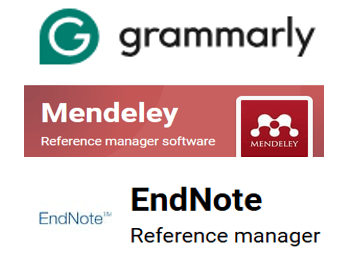Phytochemical Screening and Antibacterial Activity of Aqueous and Ethanolic Extracts from Marrubium Vulgare L Plant
DOI:
https://doi.org/10.37375/sjfssu.v4i2.2752Keywords:
Marrubium vulgare L., Phytochemical Screening, Biological PotentialAbstract
Marrubium vulgare L., a remarkable medicinal herb, has been used for centuries to effectively treat various ailments, including coughs, colds, and digestive issues. Renowned for its expectorant, diaphoretic, and anti-inflammatory properties, this precious herb has become a cornerstone of traditional medicine worldwide. In this study, the productivity of the ethanolic extract was an impressive 33.69%, while the aqueous extract showcased a still remarkable 14.5%. The pH levels demonstrated the ethanolic extract at 4.02 and the aqueous extract at 6.61. Phytochemical screening revealed the presence of beneficial compounds such as alkaloids, flavonoids, saponins, phenols, steroids, and terpenes in both extracts. It is noteworthy that the ethanolic extract exhibited a higher presence of tannins, which were not found in the aqueous extract. In contrast, the ethanolic extract did not contain phenols, whereas the aqueous extract contained a significant amount of these compounds. To further explore the biological potential of these extracts, this study was conducted on their activity against E. coli and S. aureus. The findings revealed that the aqueous extract's astounding inhibition zones, measured at 19 mm and 17 mm against E. coli and S. aureus respectively. The ethanolic extract also exhibited noteworthy results, with inhibition zones of 16 mm and 18 mm against E. coli and S. aureus correspondingly. Clearly, Marrubium vulgare L. is a truly remarkable herb with immense medicinal value.
References
Agency, E. M. (2012). , Committee on Herbal Medicinal Products (HMPC). Community Herbal Monograph on Marrubium vulgare L., herba; . HMPC: London, UK, .
Amessis-Ouchemoukh, N. (2014). Phytochemical profiling, in vitro evaluation of total phenolic contents and antioxidant properties of Marrubium vulgare (horehound) leaves of plants growing in Algeria. Ind. Crops Product, 120-129.
Bauer. (1966). Antibiotic susceptibility testing by a standardized single disc method. American Journal of Clinical Pathology . American Journal of Clinical Pathology, 493-496.
Boudjelal, A., Henchiri, C., Siracusa, L., Sari, M., & Ruberto, G. ( 2012). Compositional analysis and in vivo anti-diabetic activity of wild Algerian Marrubium vulgare L. infusion. . Fitoterapia, 286–292.
D., H. (2003 ). Medical Herbalism: The Science and Practice of Herbal Medicine. Rochester, VT: Inner Traditions, Bear & Co., 564.
Edrah, S. (2021). , F. Alafid, S. Alamen, H. Alnade, W. Kollab, M. Bdeewj; (2021); Study of antibacterial, phytochemical and physicochemical activity of green corrosion inhibitors in different corrosive media from Marrubium Vulgar L. crude extract. ACTA.
Edrah, S. (2024). Phytochemical Screening and Antibacterial Activity of Aqueous and Ethanolic Extracts from Marrubium Vulgare L Plant . Scientific Journal for the Faculty of Science-Sirte University, 5.
G., U. (2011). Preliminary phytochemical screening and antimicrobial activity of Hedera halix L. . Middle-East J. Sci. Res. , 198.
Harborne, J. (1973). Phytochemical Methods. . Chapman and Hall Ltd., London,, 49-188.
JS., G. (2002). Directory of Plants Containing Secondary Metabolites. Boca Raton, FL: CRC , 761.
Knoss. (1999). , W. Marrubium vulgare (White Horehound): In vitro culture, and the production of diterpenemarrubiin and other secondary metabolites. In Medicinal and Aromatic Plants XI; . Biotechnology in Agricultureand Forestry, Bajaj, Y.P.S., Eds.; Springer: Berlin, 274-289.
Kurbatova, N. (2003). Comparative phytochemical investigation of the composition and content of biologically active substances in Marrubium vulgare and M. alternidens. Chem. Nat. Compd., 501-502.
Mittal, V. (2016). The pharmacognostical evaluation of the Marrubium vulgare Linn collected from the Pulwama district of Jammu and Kashmir State of India. J. Chem. Pharm. Res., 7-15.
Nanda. (2016). The pharmacognostical evaluation of the Marrubium vulgare Linn collected from the Pulwama district of Jammu and Kashmir State of India. J. Chem. Pharm. Res., 7-15.
P. M. Dewick. (1966). “Tumor inhibitor from plants,” in Trease and Evans’ Pharmacognosy, . Elsevier Health Sciences, Philadelphia, Pa, USA.
Paunovic. (2016). J. Marrubium vulgare ethanolic extract induces proliferation block, apoptosis and cytoprotective autophagy in cancer cells in vitro. Cell. Mol. Biol., 108-114.
Phillipson. (1966). “Plants with antiprotozoal activity,” in Trease and Evans’ Pharmacognosy,. W.B.Saunders company, London, UK,, 14th edition.
R. Magherini. (1998). “Le piante edicinalie aromaticheierie oggi Possibilita di coltivazione delte piante medicinalie aromaticheierie,” . Litalia Agricola, V 3.
Uddin, G. (2011a, 2012b). Preliminary phytochemical screening and antimicrobial activity of Hedera halix L. Middle-East J. Sci. Res., 189.
Verma, A., & al, e. (2012). Lead findings from whole plant of Marrubium vulgare L. with hepatoprotective potentials through in silico methods. . Asian Pac. J. Trop. Biomed., S1308-S1311.
Yabrir, B. (2019). Essential oil of Marrubium vulgare: Chemical composition and biological activities. A review. Nat. Prod. Sci. , 81–91.
Downloads
Published
How to Cite
Issue
Section
License
Copyright (c) 2024 Scientific Journal for Faculty of Science-Sirte University

This work is licensed under a Creative Commons Attribution 4.0 International License.














